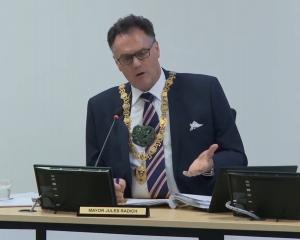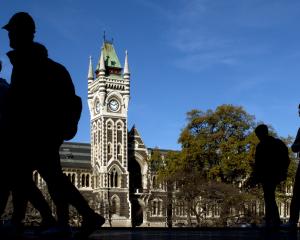
This led to the introduction in 2003 of the broadcasting Charter as a means to shore up local programming and "uncommercial" content considered culturally, socially or historically important.
TVNZ was to operate a dual mandate.
It was required to make market returns to the Government in the fiercely competive ratings-driven commercial environment, but it would be expected to make and screen Charter programmes.
For this, it would receive an annual hand-out in the region of $15 million - in addition to the contestable funds already allocated to New Zealand on Air for local content.
There are those who have long said that such a system was doomed to failure - that the two aims were so incompatible it could only end in tears.
Among them was former CEO Ian Fraser.
End in tears it has.
Whatever is to be made of the National Party's new broadcasting "policy", it has to be said that in the nine years it has had to get public broadcasting policy right, Labour-led administrations have singularly failed to do so.
It is a failure that ought to weigh heavily upon the Government because, in the event of a National Party victory at the elections later this year, the invitation is there for that party to "sort it out". In its policy statement released last week, National intimated that it intends to do just that.
Whether or not the public of New Zealand should be grateful must, for the moment, remain largely a matter of conjecture.
The policy is at best sketchy and invites more questions than it answers.
However, it does point to one or two unambiguous directives.
The first of these, perhaps more profound in its implications than in its impact, is that TVNZ will be freed from its Charter shackles. The $15 million alotted to it specifically for its charter programming will go into the contestable New Zealand on Air fund for local programming - available to a range of independent producers.
Critics have pointed out that this can only mean a reduction of an already sparse complement of "blue-chip" Charter material - the high-cost documentaries, history series, and arts programmes.
And that eventually, in effect, the "State" broadcaster would become another commercial channel like any other.
They also argue that with a less stringent mandate, more of the contestable funding will find its way on to the screens in the form of low-cost local content of the "reality TV" variety.
Others maintain that the funds will still be there for the same sorts of programmes, only TVNZ will no longer have preferential access to it.
So under National's policy it is a little unclear in what way this State asset will remain a public broadcaster - and exactly how the free-to-air digital channels TVNZ 6 and 7, with their predominance of local content, will be funded when the currently allocated money - $79 million - runs out in 2012; and, that being the case, why the company should remain in public ownership at all.
Given the paucity of detail in the policy, opponents, including Broadcasting Minister Trevor Mallard, have been able to revive the spectre of a lean commercially driven TVNZ being fattened up for eventual sale.
The second directive that might sound warning bells for those who like their radio waves unadorned by the jingle of cash registers is the "regular publication of rating/audience/household penetration data for any broadcasting entity receiving state funding".
This may be harmless enough, but, again, in the absence of any qualifying explanation, inferences, rightly or wrongly, may be drawn: public radio - that is to say Radio New Zealand - could be held to account against the sort of ratings and audience share it receives.
And the fear must be that commercial models will be used to evaluate performance.
Of course, the very point of public radio is that it should operate free of such considerations across a spectrum of genres and programmes that are ignored as uneconomic by commercial radio.
Certainly, it is in the medium of radio that arguably the starkest differences between commercial and public imperatives emerge.
For few of the core activities of Radio New Zealand - documentaries, classical music, current affairs, in-depth interviews, and the magazine formats of shows such as those presided over by Kim Hill, Chris Laidlaw, Kathryn Ryan and Jim Mora - would survive under the fiscal ruler of the market.
But many would argue they constitute the very heart of public broadcasting and, as such, perform a vital role in sustaining the nation's intellectual and cultural capital.












